- Lawn Turf
- Artificial
- Soil
- Timber
- Composite Decking
- Paving & Stone
Get In Touch With Our Experts Today!
Give us a Call! - Seed & Fertiliser
- Dressing
- Bark
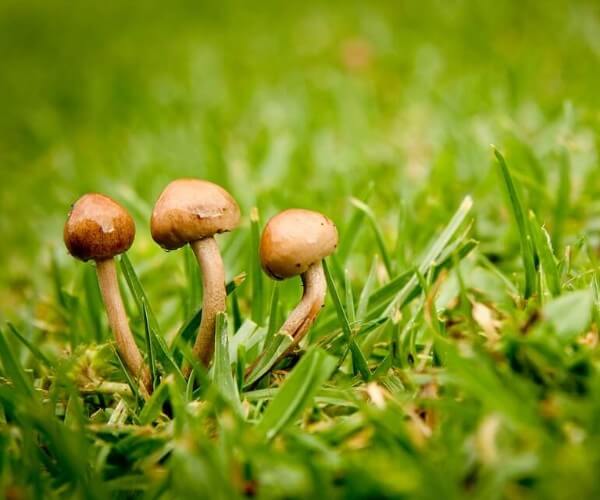
August 11, 2017
You’ve just spent time and money on laying your new turf, but what’s that little thing in the corner? It can’t be? Mushrooms? Luckily, there are ways to deal with fungus on your lawn, so your grass can once again look green and beautiful.
Fungi are the most active microorganisms found in turf and can have a positive effect on your lawn, supplying it with nutrients that are important for its growth and well-being. However, some can cause fungal diseases.
While it’s not a good idea to remove all traces of fungi, you still need to identify and manage them, or they could lead to diseases which aren’t so beneficial to your lawn. There are also tons of other ways your lawn can become fungal disease-ridden, which is why we’re here to help!
In this guide, we’ll cover everything you need to know about lawn fungus and how to get rid of it.
Lawns are full of fungal spores that are usually harmless, although certain conditions can cause them to germinate and lead to harmful diseases. These diseases can fester on your lawn and make it look quite unappealing.
There are several causes of lawn fungus, most commonly:
While some of these are uncontrollable factors (the unpredictable British weather, for example), keeping an eye on how much or how little you are watering your turf and mowing to appropriate heights are both aspects of lawn care that you can control.
Read More: The Importance of Mowing Your Lawn
So, here is the ideal amount you should water your lawn and how high you should keep it, depending on your garden type:
So, here is the ideal amount you should water your lawn and how high you should keep it, depending on your garden type:
| Garden Type | Frequency of Watering | Ideal Grass Length |
| Clay or loam soil garden | Water once per week as a rule, and twice a week during summer | 35-50mm |
| Shaded garden | Water once per week, but avoid overwatering, especially if it’s rained | 50-60mm |
| South-facing garden | Water regularly and up to 3 times per week during hot spells | 40-50mm |
| Ornamental lawn | Water 1-2 times per week | 25-30mm, especially if there is low foot traffic |
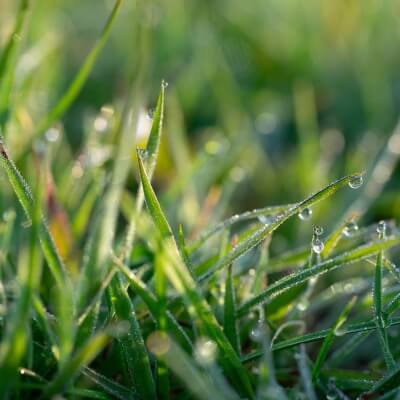
If you are looking to stop the development of fungus, we recommend you:
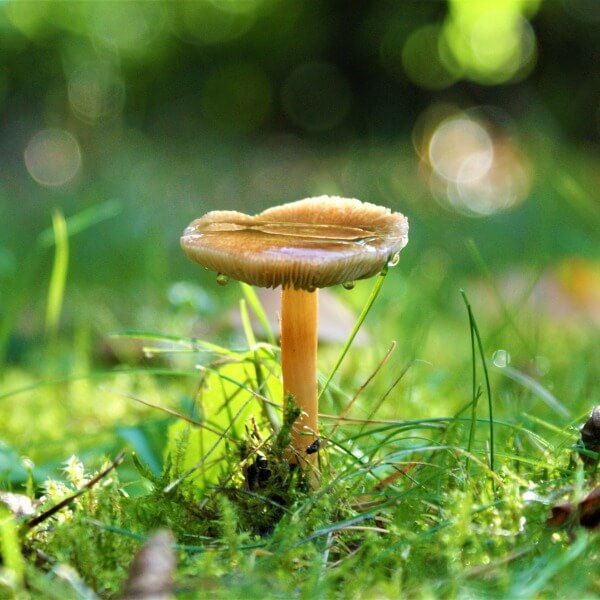
Below are some tell-tale signs that you might indeed have a lawn full of fungus:
|
There are quite a few fungal diseases that can affect your lawn. The disease varies from certain times of the year to certain weather conditions, as well as the quality of the soil underneath.
Here are a few common ones that you might find in your garden:
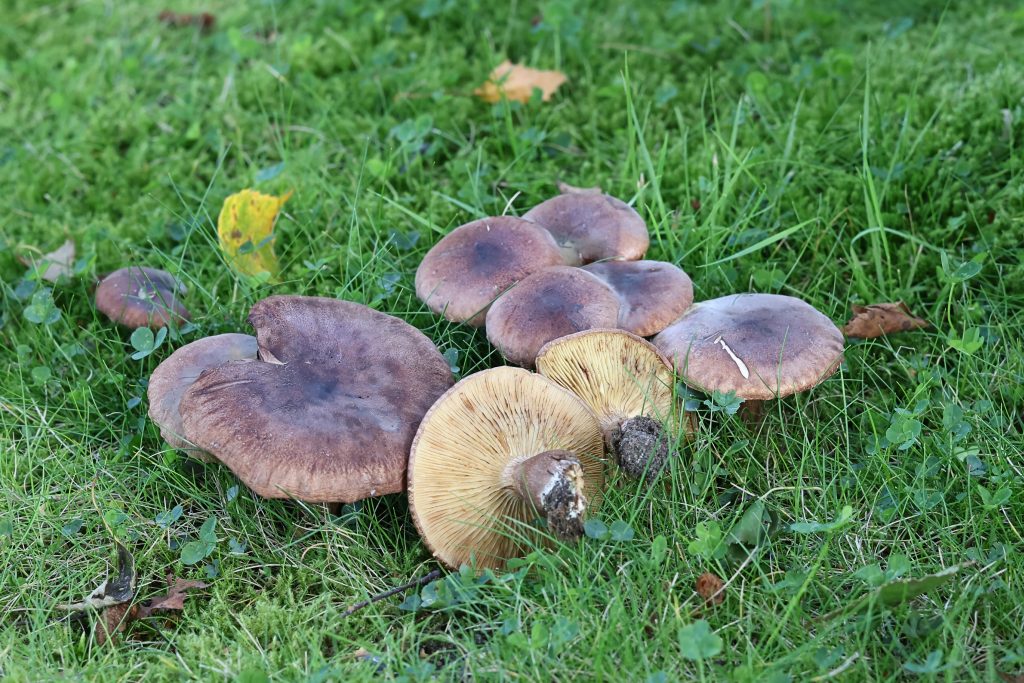
Toadstools are naturally occurring, and it shouldn’t come as much of a surprise if you find these in your lawn, new or old. They are a sign of a healthy lawn! And toadstools aren’t the main part of a fungus.
Fungi grow very thin, cotton-like strands called ‘mycelium’, which disappear when dried by the sunshine. These usually aren’t cause for concern, but they can be a symptom of fungal disease.
There are a few mushrooms and toadstools that negatively impact your garden, like honey fungus or fairy rings, and you can learn more about these in the RHS article on toadstools. Although most mushrooms and toadstools within your lawn are generally harmless, they should not be consumed.
Read More: How to Remove Mushrooms from Your Lawn
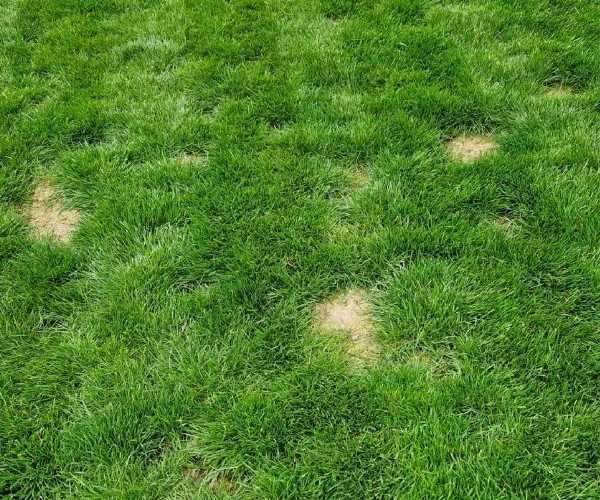
Brown patch is usually found in summer, and it’s a lawn disease caused by a fungus called Rhizoctonia.
The disease becomes visible when temperatures reach 18 °C, but the most active growth of brown patch lawn disease occurs when humidity levels are very high, reaching temperatures of 25-30°C.
You’ll easily spot this because it’s an irregular area of brown or tan grass that’s dead or dying.
Fusarium Blight, also known as Necrotic Ring Spot, is a soil-bound disease that occurs during the hot and dry conditions of summer.
It tends to be circular and looks a lot lighter than the rest of the lawn, so you should easily be able to diagnose it.
Dollar spot occurs in the summer and autumn, when there are warm days, cool nights, and high humidity.
The turf stays moist for longer in the morning due to shade, light rain, and lack of air movement, which encourages the development of the disease.
If you have small, circular spots of pale turf that look a little sunken, it’s likely to be dollar spot.
In terms of prevention, there are several things that you can do to try to fend off fungal issues and keep your turf lawn looking good as new.
It’s a good idea to aerate your lawn at the end of summer, as the extra use and higher footfall during the warmer months can harden and compact the ground.
You should also rake your lawn to remove any thatch and allow the grass to breathe. A lawn with poor air circulation is likely to suffer from a fungal disease, so be sure to remove anything blocking the air.
It’s also important to be careful when watering your lawn to avoid leaving soggy patches or puddles in your grass. While you might think you’re doing it good by heavily watering it, it can actually cause the fungus.
Read More: How to Care for Your Lawn After Heavy Rain
Water thoroughly, but less frequently, to develop a strong root system that can protect itself against fungal diseases.
Here are some other things you can do to protect your lawn:
|
And there you have it! Everything you need to know about keeping your precious turf fungus-free for a beautiful, healthy-looking lawn. By taking proactive measures, you can maintain a lush, green lawn free of fungal infections.
Regularly aerating the soil, ensuring proper drainage, and watering your lawn at appropriate times can significantly reduce the risk of fungus growth. Consistent care and attention are the keys to preserving the beauty and health of your outdoor space for years to come.
If you’re looking for more help and advice on your turf’s health, head to our knowledge hub, where our experts will guide you to the perfect lawn. Or, sign up for our newsletter (at the bottom of this page) to get tips, tricks, deals, and more sent straight to your inbox.
Fungal diseases on a lawn can take on various appearances, depending on the type of fungus you’ve got. Common signs include discoloured patches of grass, often yellow, brown, or white, which can spread if not addressed quickly.
You might also notice thread-like structures, known as mycelium, appearing on the surface of the grass, especially during the early morning when dew is present. Some fungi create distinct patterns, such as rings or spots, while others cause thinning or irregular growth.
Grass fungus can potentially harm your lawn by weakening the grass and roots and making it more susceptible to further damage from pests, drought, or other environmental stressors.
Left untreated, the fungus can spread quickly, leading to larger areas of damage and a less visually appealing lawn.
Treating lawn fungus in the UK begins with identifying the type of fungus affecting your grass.
You should then scarify your lawn while improving its nutrients, drainage, and aeration.
Patience is key, as it may take some time for the grass to fully recover, especially if the infection was severe.
To encourage regrowth, consider overseeding the affected areas with a grass seed variety suitable for your climate and soil conditions.
CALL US NOW ON 01234 818 253